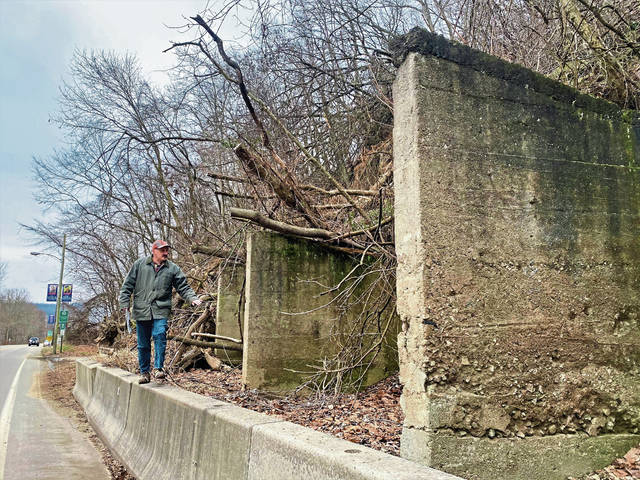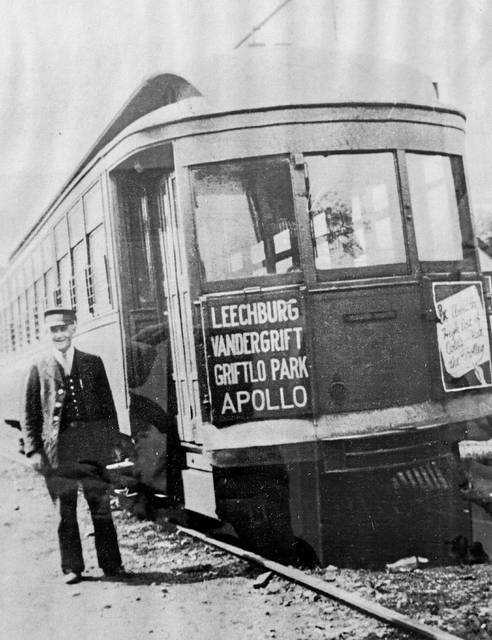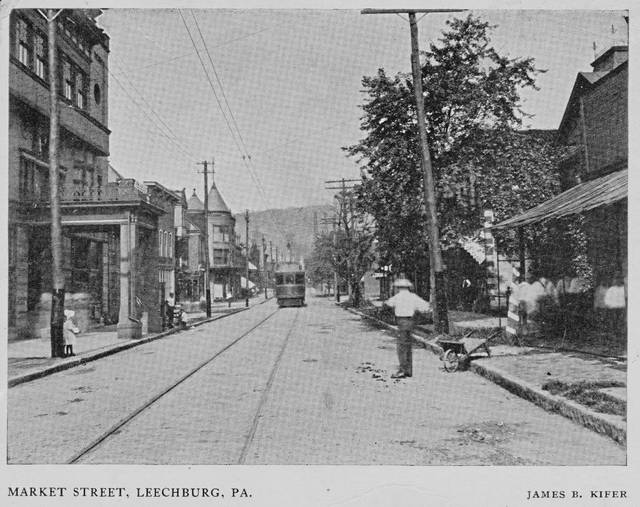Some remnants of Leechburg's trolley system buried under landslide debris
Leechburg’s trolley days are long gone, but memories and physical reminders remain more than eight decades after the last trolleys stopped running.
Larry Boehm, president of the Leechburg Area Museum and Historical Society, invited the Tribune-Review to explore structures that remain from the old trolley system, including remnants of the original trolley barn and a salt shed that can be seen on Route 66 as you leave the borough.
The society had planned to use walls from those structures for a community mural depicting the trolleys, trains and canal boats that once passed through the area and a large Route 66 sign.
Then two landslides in April 2018 covered about a quarter of the remaining trolley shed.
“We had been in contact with the property owner about doing that (mural) and about a month later, a landslide happened,” Boehm said.
“The foundation appears to still be standing, but we have no idea how to uncover it to proceed,” Boehm said. “It halted the project until we can figure out what to do about it.”
The Pittsburgh and Allegheny Valley Railway Co. began construction of an almost nine-mile trolley line from Leechburg to Apollo in 1903. Two cars began operating regularly in 1906, running from Third and Market streets in Leechburg to Apollo.
The railroad had intended to extend the line to New Kensington, Oakmont and finally Wilkinsburg, but financial problems derailed those plans.
Fem Biagioni, 99, of Leechburg recalled riding the trolley to and from Kepple Hill School from fifth through eighth grade. It was about a 20-minute ride each way, he said.
“Once you were on that trolley, you had to behave. There was no walking around. Mr. Gourley and Mr. Markey were the conductors. They were nice.”
Mr. Gourley was Frank Gourley — the late grandfather of Vandergrift’s John Gourley, 65.
Frank Gourley, a conductor for about 10 years, usually worked a 10-hour shift ending at 1 a.m., his grandson said.
“He would sleep in the trolley car because he didn’t have a way to get back home to Apollo, so he would go home on the first trolley in the morning,” John Gourley said.
Frank Gourley was working when the St. Patrick’s Day flood of 1936 forced a 24-hour closure of the line.
“My grandfather worked the day of the flood, and it got worse and worse, and he was the last person to run the trolley until the water washed out the track too much,” John Gourley said.
Flood waters destroyed about 2 miles of trolley track, and the power substation and two trolley cars were submerged. Reconstruction costs were estimated at $34,000.
“He knew a lot of people, because for most people the trolley was their only method of transportation back then,” said John Gourley, who has his grandfather’s original trolley farebox as a memento.
Gary Peterman, 65, of Leechburg said his grandfather, James Peterman, worked as a trolley conductor during the 1920s.
“One thing I remember him saying is that he met a lot of good people while he was on the trolley,” Peterman said.
Leechburg resident Don Favero, 73, said his father was a frequent trolley rider.
“My father told me many times how his family would take the trolley from Leechburg to Griftlo Park outside of Apollo” in the 1920s, Favero said.
John Fiorina, who grew up on Leechburg’s Market Street, said the old trolley lines ran right past his house.
“I found a very old trolley token digging in the backyard as a youngster” in the 1970s, Fiorina said.
West Penn Railways decided to close the line in 1936 because part of the line was deemed unsafe, and addressing the problem would have cost almost $100,000.
The Pittsburgh and Allegheny Valley Street Railway Co. ceased operations Nov. 8, 1936, ending trolley service in Armstrong County. Penn Bus Lines took over operating bus service the following day. The trolley tracks on Leechburg’s Market Street were removed in 1957.
Joyce Hanz is a native of Charleston, S.C. and is a features reporter covering the Pittsburgh region. She majored in media arts and graduated from the University of South Carolina. She can be reached at jhanz@triblive.com
Remove the ads from your TribLIVE reading experience but still support the journalists who create the content with TribLIVE Ad-Free.






